SaladStop!’s Smoosha Smoothies
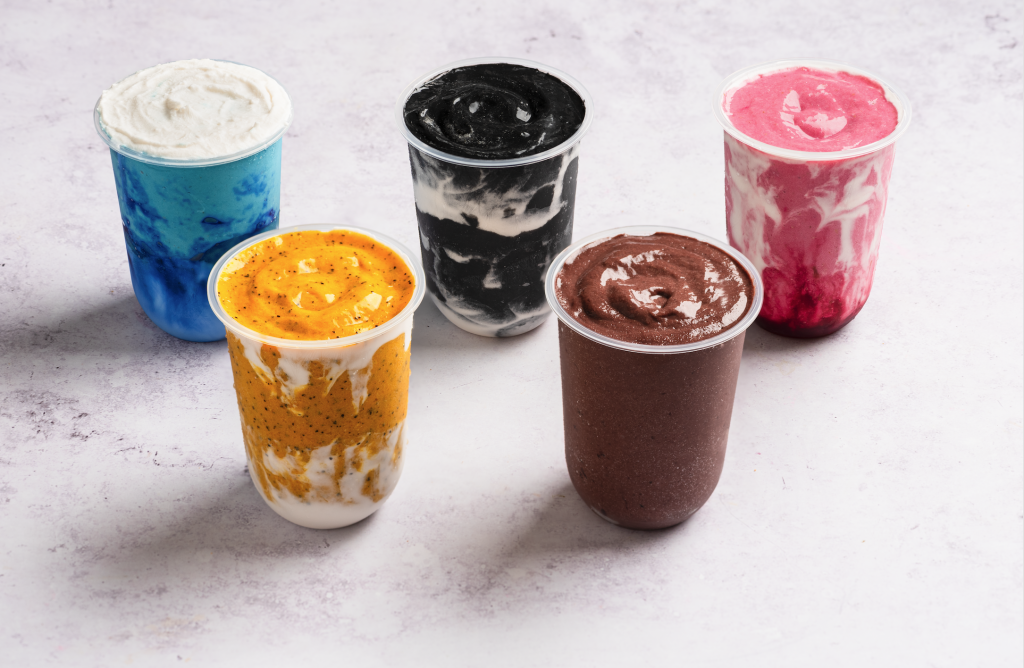
At the heart of SaladStop!’s Smoosha Smoothies lies the transformative power of nature’s bounty. Each smoothie is a harmonious blend of wholesome ingredients, carefully selected for their unique health benefits and rejuvenating properties. From antioxidant-rich fruits to nutrient-packed superfoods, every sip is a testament to the restorative potential of natural ingredients. These smoothies not only satisfy taste buds but also support overall health and wellness goals, offering essential nutrients in a delicious and convenient way. Boost immunity, energy, digestion, or skin health with delicious Smoosha Smoothies, incorporating essential nutrients into your daily routine. Each thoughtfully crafted smoothie delivers vitamins, minerals, and antioxidants, making it ideal for nourishing both body and mind. Cheaper than a Facial Treat yourself to a tropical oasis with the invigorating blend of pineapple, banana, mango, coconut mylk, coconut cream, blue spirulina, and collagen peptides. This smoothie not only tantalizes your taste buds but also nourishes your skin from within, offering a radiant glow that rivals the effects of a facial. Pineapple and mango are rich in vitamin C, promoting collagen production and skin health. Blue spirulina provides powerful antioxidants, while collagen peptides enhance skin elasticity and hydration. Power Shake Energize your day with the zesty fusion of mango, pineapple, passionfruit, lemon, carrot, coconut water, coconut cream, turmeric, and ginkgo biloba leaf. This revitalizing smoothie delivers a burst of essential vitamins and minerals, enhancing your vitality and resilience. Mango and pineapple are packed with immune-boosting vitamin C, while carrot provides beta-carotene for eye health. Turmeric’s anti-inflammatory properties and ginkgo biloba’s cognitive benefits make this smoothie a powerhouse of wellness. Detox Tonic Cleanse and rejuvenate your body with the detoxifying blend of blueberries, pineapple, lemon, avocado, medjool dates, coconut mylk, and activated charcoal. This refreshing elixir helps purify your system and restore balance, leaving you feeling refreshed and revitalized. Blueberries and lemon are rich in antioxidants, supporting liver function and detoxification. Avocado adds healthy fats and fiber, while activated charcoal binds toxins and promotes their elimination. Supreme Defense Strengthen your body’s defenses with the powerhouse combination of pure organic acai, banana, mango, oat mylk, and hyaluronic acid. This immune-boosting smoothie fortifies your body from within, promoting overall wellness and vitality. Acai berries are renowned for their high antioxidant content, while bananas and mango provide essential vitamins and minerals. Hyaluronic acid supports joint health and skin hydration, making this smoothie a comprehensive wellness booster. Energy Elixir Fuel your day with the dynamic fusion of banana, strawberry, blueberries, chia seeds, oat mylk, coconut cream, strawberry puree, vanilla, and maca root. This invigorating elixir elevates your energy levels and enhances your stamina, empowering you to conquer any challenge that comes your way. Bananas and strawberries are excellent sources of quick-releasing carbohydrates, while chia seeds provide sustained energy with their high fiber and omega-3 content. Maca root is known for its adaptogenic properties, helping to balance hormones and increase endurance. Elevate Your Wellness Routine Incorporating SaladStop!’s Smoosha Smoothies into your daily regimen offers a myriad of health benefits, including improved digestion, enhanced immunity, heightened energy levels, and glowing skin. Whether you’re kickstarting your morning or seeking a post-workout refuel, these smoothies serve as the perfect solution to your nutritional needs. As we navigate the complexities of modern living, prioritizing our health and well-being becomes paramount. SaladStop!’s Smoosha Smoothies serve as a testament to the transformative power of nourishing nutrition, offering a delectable fusion of flavor and functionality. Elevate your culinary experience and embark on a journey towards vitality and longevity with every revitalizing sip. Your body deserves nothing less than the best—treat yourself to the gift of wellness with SaladStop!’s Smoosha Smoothies today. Discover SaladStop!’s Smoosha smoothies now!
SaladStop!’s Smoosha Acai Bowls

SaladStop! brings a fresh and exciting approach to healthy eating with its Smoosha Acai Bowls. These bowls blend nutrient-rich acai berries with wholesome toppings, offering a delicious, satisfying meal bursting with health benefits. The Power of Acai At the heart of the Smoosha Acai Bowls is the pure organic acai berry. Known for their high antioxidant content, acai berries help combat oxidative stress and inflammation in the body. Rich in fiber, these berries also aid in digestion and promote a healthy gut. Acai berries provide heart-healthy fats, essential amino acids, and micronutrients like vitamin A and calcium, making them dietary superstars. Acai Glory: A Nutrient-Dense Delight The Acai Glory bowl is a testament to the perfect blend of taste and health. This bowl combines banana, grapes, toasted almonds, sunflower seeds, and chia seeds for a delightful mix of textures and flavors. Bananas provide a natural sweetness and are rich in potassium, essential for maintaining proper heart and muscle function. Grapes provide juicy antioxidants and vitamins, while toasted almonds offer a satisfying crunch with healthy fats and protein. Sunflower seeds are a powerhouse of essential fatty acids and vitamin E, which support skin health. Chia seeds, a fantastic source of omega-3 fatty acids, fiber, and protein, complete this bowl, enhancing its nutritional profile. For added indulgence, a peanut butter drizzle brings creamy texture and healthy fats and protein to this nutritious bowl. Samba: A Berry Bliss The Samba Acai bowl brings together the natural sweetness of bananas and the antioxidant-rich goodness of blueberries. Blueberries, rich in vitamin C, K, and fiber, promote heart health and aid digestion with their nutritious profile. This bowl is further elevated with a sprinkle of granola, adding a delightful crunch and additional fiber. Chia seeds provide their usual benefits, and the peanut butter drizzle not only enhances the flavor but also adds a source of protein and healthy fats, making this bowl a balanced and satisfying meal. Triple G: A Superfood Symphony For those seeking a bowl with a twist, the Triple G acai bowl offers a unique combination of pure organic acai and coconut chia pudding. Grapes, granola, goji berries, and sunflower seeds top this bowl, creating a symphony of superfoods. Coconut chia pudding is rich in healthy fats and provides a creamy base that complements the tangy acai. Goji berries are a traditional superfood known for their high antioxidant content, which supports immune function and overall vitality. The combination of these ingredients ensures that the Triple G bowl is not only delicious but also packed with nutrients that support overall health and well-being. Green Glow: A Refreshing Vitality Boost The Green Glow acai bowl stands out with its vibrant green hue, thanks to the addition of organic spirulina. Spirulina is a nutrient-dense blue-green algae rich in protein, vitamins, and minerals, making it a powerful supplement for boosting energy and improving immune function. This bowl features frozen banana, granola, goji berries, chia seeds, and mint leaves. Mint adds a refreshing taste and aids in digestion, while the other ingredients provide a balanced mix of carbohydrates, proteins, and healthy fats. This bowl is perfect for those looking to start their day with a refreshing and energizing meal. Choco Nana: Indulgence with Benefits For those who crave a bit of indulgence without compromising on health, the Choco Nana acai bowl is an ideal choice. Pure organic acai is topped with banana, toasted almonds, biscoff crumbs, cacao nibs, and drizzled with cookie butter. Cacao nibs are a rich source of antioxidants and magnesium, promoting heart health and muscle function. The cookie butter drizzle adds a touch of decadence, making this bowl a deliciously satisfying treat that still offers significant nutritional benefits. SaladStop!’s Smoosha Acai Bowls are more than just a treat for the taste buds—they are a celebration of health and nutrition. Each bowl is thoughtfully crafted to provide a balanced mix of essential nutrients, antioxidants, and healthy fats, making them a perfect choice for anyone looking to enhance their diet with wholesome and delicious options. Whether you’re seeking an energizing breakfast, a post-workout refuel, or a healthy snack, these acai bowls are a delightful way to nourish your body and soul. So, next time you crave something deliciously healthy, dive into the vibrant world of SaladStop!’s Smoosha Acai Bowls. Your body will thank you. Discover SaladStop!’s Smoosha Acai Bowls now!
Salad Spotlight: Tuna San Salad
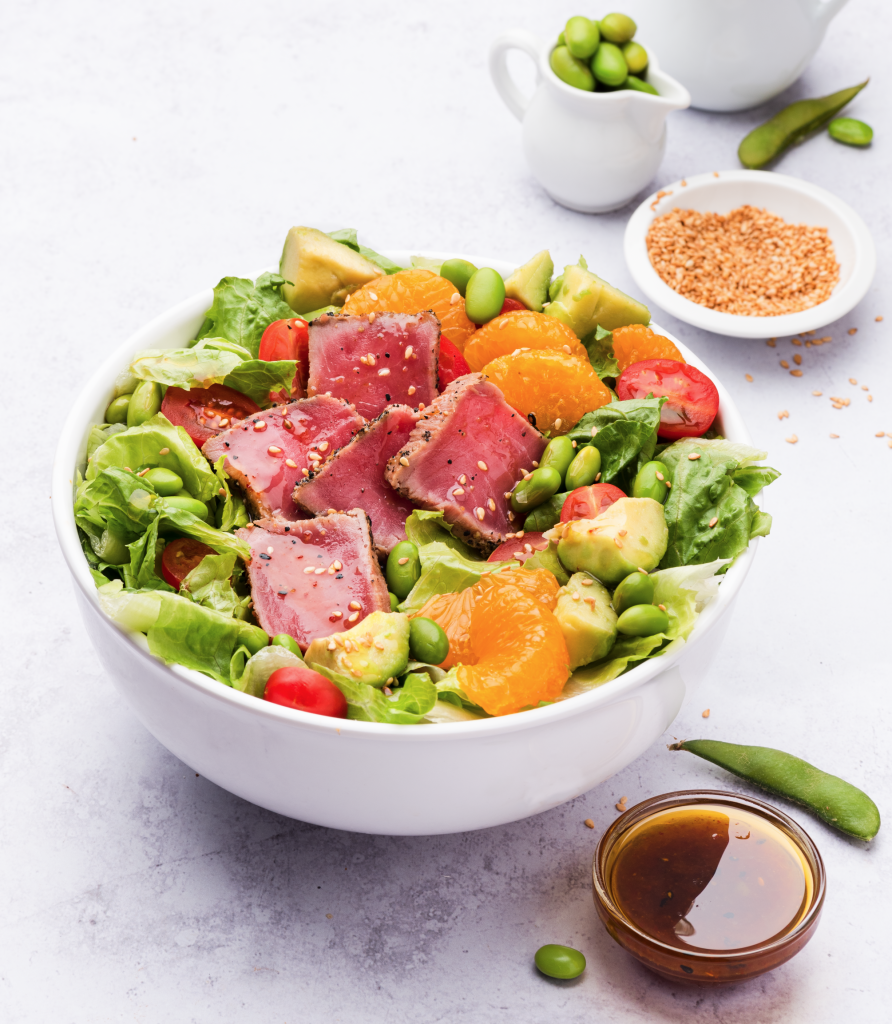
Tuna San Salad, a culinary masterpiece by SaladStop!, delights palates with its medley of flavors and nourishing ingredients. This wholesome dish offers a appetizing experience, combining savory seared tuna with crisp greens and creamy avocado. With each bite, Tuna San Salad delivers both satisfaction and nutritional goodness. Now let’s discuss what makes this Salad a truly one of its kind. What makes Tuna San Salad so good? The Nutrient-Rich Foundation: Mixed Greens At the core of this culinary masterpiece lies a bed of mixed greens, a nutrient-rich foundation bursting with vitamins, minerals, and antioxidants. Mixed greens, made of variety of leafy vegetables such as frisee, crystal and romaine lettuce, red and white cabbage, are low in calories but high in fiber, aiding in digestion and increases satiety. Moreover, these leafy greens boast an impressive array of vitamins, including vitamin K for bone health, vitamin A for vision, and vitamin C for immune function. Protein Powerhouse: Seared Tuna The seared tuna, the star of the Tuna San Salad, not only elevates the dish with its savory flavor but also delivers a hefty dose of protein. Protein is essential for muscle repair and growth, making it an indispensable component of any balanced diet. Additionally, tuna is rich in omega-3 fatty acids, known for their anti-inflammatory properties and their role in promoting heart health. Creamy and Nutritious: Avocado Accompanying the seared tuna are slices of creamy avocado, a superfood celebrated for its heart-healthy monounsaturated fats. Avocado is rich in potassium, a mineral crucial for maintaining healthy blood pressure levels and overall cardiovascular function. Furthermore, its velvety texture lends a delightful contrast to the crispness of the greens and the tender tuna. Nutritional Powerhouse: Edamame Edamame, the young soybeans nestled within the Tuna San Salad, are nutritional powerhouses in their own right. Bursting with plant-based protein, fiber, and an array of essential vitamins and minerals, edamame contribute to satiety while building muscle strength and bone health. Moreover, they contain phytoestrogens, plant compounds known for their potential to alleviate menopausal symptoms and reduce the risk of certain chronic diseases. Bursting with Flavor: Cherry Tomatoes and Citrus Complementing the mix are juicy cherry tomatoes, bursting with flavor and rich with antioxidants such as lycopene, which may help protect against certain types of cancer and promote heart health. The addition of orange not only enhances the salad’s vibrant citrusy notes but also provides a refreshing burst of vitamin C, boosting the immune system and supporting collagen production for healthy skin. Crunchy Texture and Nutty Flavor: Sesame Seeds A sprinkle of sesame seeds adds a delightful crunch to the Tuna San Salad while leaving a nutty aroma and flavor. Sesame seeds are rich in beneficial compounds, including lignans and phytosterols, which have been linked to improved heart health, reduced inflammation, and enhanced antioxidant activity. Tantalizing Dressing: Wasabi Honey Soy Finally, the salad is poured with a appetizing wasabi honey soy dressing, infusing each bite with a harmonious balance of sweet, savory, and spicy notes. While adding a burst of flavor, this dressing also contributes to the functional nutrition profile of the Tuna San Salad, providing a modest amount of healthy fats and a hint of wasabi’s sinus-clearing kick. The SaladStop! Tuna San Salad is not merely a culinary delight but also a testament to the marriage of flavor and function. With its diverse array of nutrient-rich ingredients, from leafy greens and protein-packed tuna to creamy avocado and antioxidant-rich fruits, this salad exemplifies the art of nourishing the body while enticing the taste buds. Whether enjoyed as a wholesome meal on its own or as a refreshing accompaniment to any dining experience, the Tuna San Salad offers a harmony of flavors and a bounty of functional nutrition benefits to savor with every bite.
Nourish Your Energy: The Impact of Nutrition on Your Daily Stamina

In today’s bustling world, keeping up with the demands of the day can feel like a marathon. Whether it’s work deadlines, family commitments, or personal goals, having the energy to tackle it all is crucial. What many overlook is that what we eat plays a pivotal role in our energy levels. In this blog post, we’ll explore how proper nutrition fuels our bodies for sustained energy and share practical tips for optimizing your daily vitality. Importance of Proper Nutrition for Energy: Picture your body as a finely tuned machine, needing the right fuel to function at its best. Just like a car requires gasoline, our bodies require nutrients from food to generate energy. However, not all foods are created equal in sustaining energy levels. While quick fixes like sugary snacks and caffeinated drinks may offer a temporary boost, they often lead to energy crashes later on. Conversely, foods rich in complex carbohydrates, protein, healthy fats, vitamins, and minerals provide a steady and lasting source of energy. Balancing Macronutrients: Achieving consistent energy levels involves balancing our intake of macronutrients—carbohydrates, protein, and fat. Carbohydrates serve as the body’s primary energy source, fueling our muscles and brain. Opt for complex carbohydrates found in whole grains, fruits, and vegetables, which digest slowly and provide sustained energy. Protein aids in tissue repair and muscle maintenance, vital for energy metabolism and preserving lean body mass. Incorporate lean protein sources like poultry, fish, beans, and nuts into meals and snacks. Additionally, healthy fats play a crucial role in hormone regulation, cell function, and nutrient absorption. Include sources of unsaturated fats such as avocados, nuts, seeds, and olive oil to promote lasting energy and satiety. Staying Hydrated: While often overlooked, proper hydration is equally essential for maintaining energy levels. Even mild dehydration can lead to fatigue and impaired cognitive function, hindering our ability to stay alert and focused. Aim to drink an adequate amount of water throughout the day, especially before, during, and after physical activity. Herbal teas, infused water, and coconut water are refreshing alternatives. Be cautious with caffeinated and sugary beverages, as they can contribute to dehydration if consumed excessively. Incorporating Energy-Boosting Foods: Alongside balanced macronutrient intake and hydration, incorporating specific energy-boosting foods into your diet can sustain vitality throughout the day: Whole grains provide complex carbohydrates, fiber, and B vitamins to support energy production and stabilize blood sugar levels. Lean protein sources like chicken, tofu, and Greek yogurt promote satiety and muscle health while aiding in energy metabolism. Colorful fruits and vegetables supply vitamins, minerals, antioxidants, and fiber for sustained energy and overall well-being. Nuts and seeds offer a mix of healthy fats, protein, and fiber to keep you energized between meals. Dark chocolate contains caffeine and flavonoids that enhance alertness and mood without the energy crashes associated with sugary snacks. Nutrition is a cornerstone of maintaining sustained energy levels throughout the day. By prioritizing balanced macronutrients, adequate hydration, and energy-boosting foods, you can fuel your body effectively and conquer daily challenges with vigor. Remember to choose whole, nutrient-rich foods and listen to your body’s signals for optimal energy levels and overall vitality. Want to calculate your food? Try our Nutritional Calculator here: Nutritional Calculator – SaladStop! Singapore: Salad bowls, Wraps & Smoothies
The Ultimate Guide for Vegan Cooking
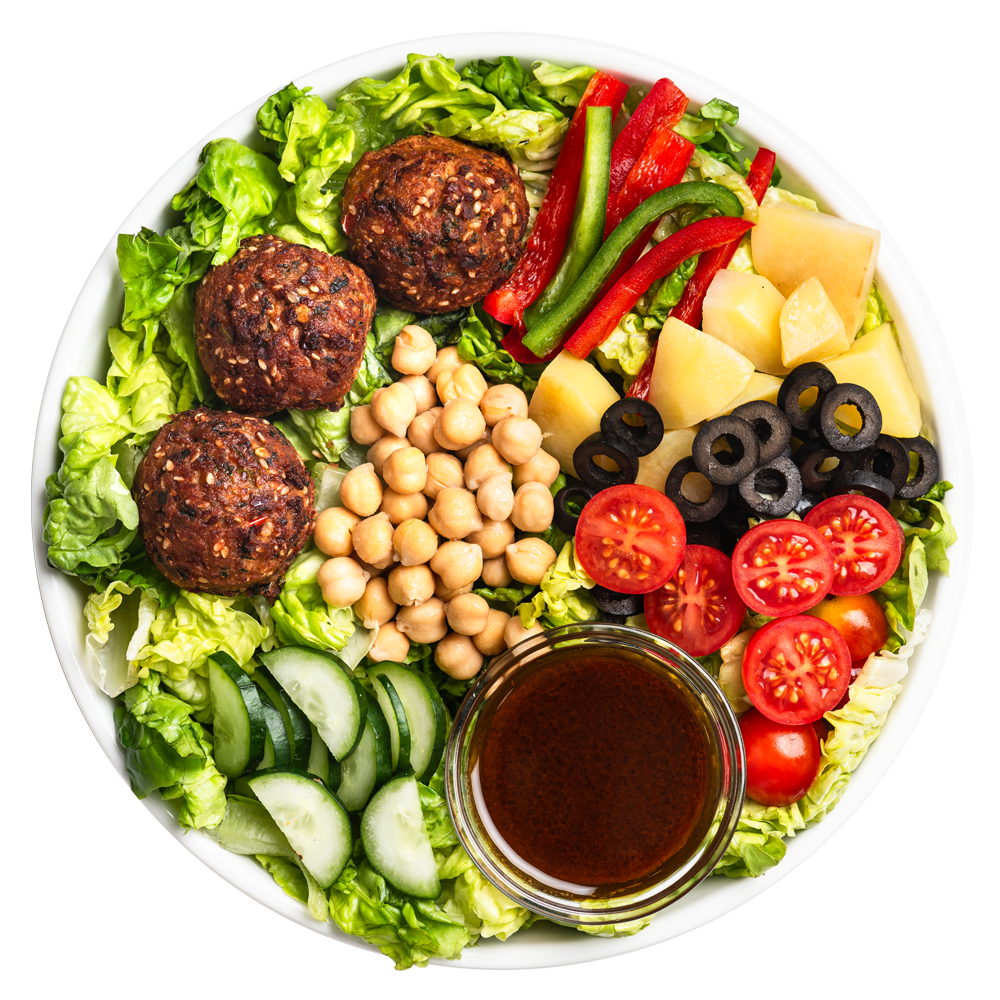
Welcome to the world of vegan cooking, where culinary possibilities are as vast as well as exciting as they are delicious. Whether you’re a committed vegan or just curious about plant-based cooking, our Ultimate Guide to Vegan Cooking is your guide to a fun, compassionate and healthy culinary journey. Vegan cooking is not boring at all, despite what some people may think. Hence, It’s actually quite exciting! There are clever tricks and special ingredients that make vegan food taste just as good, if not better, than regular non-vegan food. Our guide will show you that vegan cooking is full of delicious and fulfilling dishes. These dishes not only make your taste buds happy but also match your values of being kind to animals and the environment. This guide will give you recipes and things you need for your vegan cooking. Thus, we want to make your vegan journey easy, fun, and yummy. So, put on your apron, and let’s explore a world of tasty sweets that are good for your taste buds and the planet. Plant-Based Nutrition Guide for Vegan Cooking Before we dive into the kitchen and start cooking, it’s essential to consider some key nutrition factors. These considerations will ensure that your vegan meals are not only delicious but also nutritionally balanced. Furthermore, to help you achieve this, we’ve prepared a list of foods to have in your pantry that will provide you with all the essential nutrients that you should pay attention to on a vegan diet. Protein: beans, legumes, tofu, tempeh, seitan, and meat alternatives. Calcium: fortified vegetable milk, tofu, leafy greens, and almonds. Iron: Potatoes, legumes, tofu, quinoa, and fortified grains. B12: Consider B12 supplements because these are found primarily in animal products. Plant-Based Protein Plant-based protein sources are essential for individuals following a vegan or vegetarian diet, and they can also be a healthy addition to any diet. Explore our table of plant-based protein sources. Furthermore, discover how to use each one effectively: Dairy Alternatives These dairy alternatives are made from various plant sources and can be used in a wide range of recipes. Moreover, here are some common dairy alternatives: Almond Milk Almond milk is a popular milk substitute which is made from ground almonds and water. Because it has a mild, slightly nutty flavor, it is often used in cereal, coffee, and baking. Soy Milk Soy milk is made from whole soybean, also has a creamy texture. It’s a versatile milk alternative and is commonly used in both sweet and savory dishes. Oat Milk Oat milk is made from oats and water, boasting a naturally sweet and creamy taste that is great for coffee, cereal, and baking. Coconut Milk Coconut milk also used in Asian cuisine, is rich and creamy. It can be used in both sweet and savory recipes, as well as in coffee and smoothies. Rice Milk Crafted from milled rice, commonly brown rice, rice milk serves as a mild and delicately sweet alternative to traditional dairy milk. Moreover, it is a neutral, slightly sweet milk substitute. Cashew Milk Cashew milk is made from blended cashews and water, resulting in a creamy, nutty flavor. Thus, making it perfect for desserts. Flax Milk Flax milk is made from flax seeds and has a mild, slightly nutty taste. Also it’s rich in omega-3 fatty acids and is a good addition to smoothies and cereal. Macadamia Milk Macadamia milk is made from macadamia nuts and has a rich, buttery flavor. So, It’s a creamy milk alternative for coffee and baking. Plant-Based Yogurt Plant-based yogurts are made from various ingredients such as almond, coconut, soy, and cashews. Hence, they come in a variety of flavors and can be used as a dairy-free alternative in recipes or enjoyed on their own. Plant-Based Cheese Plant-based cheeses are made from ingredients like nuts, soy, and tapioca starch. Additionally, they come in a variety of styles and flavors, suitable for melting on pizzas or adding to sandwiches. Plant-Based Butter Vegan butter is made from oils like coconut or soy and is used as a dairy-free substitute in cooking, baking, and spreading on bread. Furthermore, it provides a versatile option for those seeking plant-based alternatives in their culinary endeavors. Plant-Based Creamers Creamers made from almond, soy, or coconut are commonly used to replace traditional dairy creamers in coffee and tea. Additionally, these plant-based alternatives offer a rich and creamy texture to enhance your beverages. Egg Replacements These alternatives work well in most recipes that call for eggs. Furthermore, here are some common plant-based egg replacements: Vegan Substitutes Here are some popular substitutions for animal-based ingredients: Butter Alternatives Vegan Butter or Margarine: Various brands offer vegan-friendly butter substitutes for baking, spreading, and cooking.Coconut Oil: Unrefined coconut oil can replace butter in many recipes but may impart a subtle coconut flavor. Honey Alternatives Maple Syrup: You can use this natural sweetener in recipes as a substitute for honey.Agave Nectar: Another liquid sweetener that works as a honey substitute. Gelatin Alternatives Agar-Agar: Coming from seaweed, agar-agar serves as a replacement for gelatin in recipes that necessitate a gelling agent. Additionally, it is derived from seaweed and can be used as a substitute for gelatin in various recipes.Pectin: Utilized in the preparation of jams and jellies, pectin is a plant-based gelling agent. Furthermore, it is commonly employed in the creation of these fruit spreads. Stock and Broth Alternative Vegetable Broth: Use vegetable broth instead of meat-based broths for soups and stews. Cream Alternative Coconut Cream: A sumptuous substitute for heavy cream in recipes is coconut cream. Moreover, it serves as a luscious alternative for recipes that call for heavy cream. Bacon Alternative Tempeh Bacon: By marinating and pan-frying tempeh slices, you can replicate both the taste and consistency of bacon. Furthermore, this method allows you to achieve a bacon-like flavor and texture with marinated and pan-fried tempeh slices. Milk Chocolate Alternative Dairy-Free Chocolate: When shopping for chocolate, seek out products labeled as “dairy-free” or “vegan” to use in both baking and snacking.
Ensuring a Healthy Vegetarian Diet for Children: Tips and Guidance
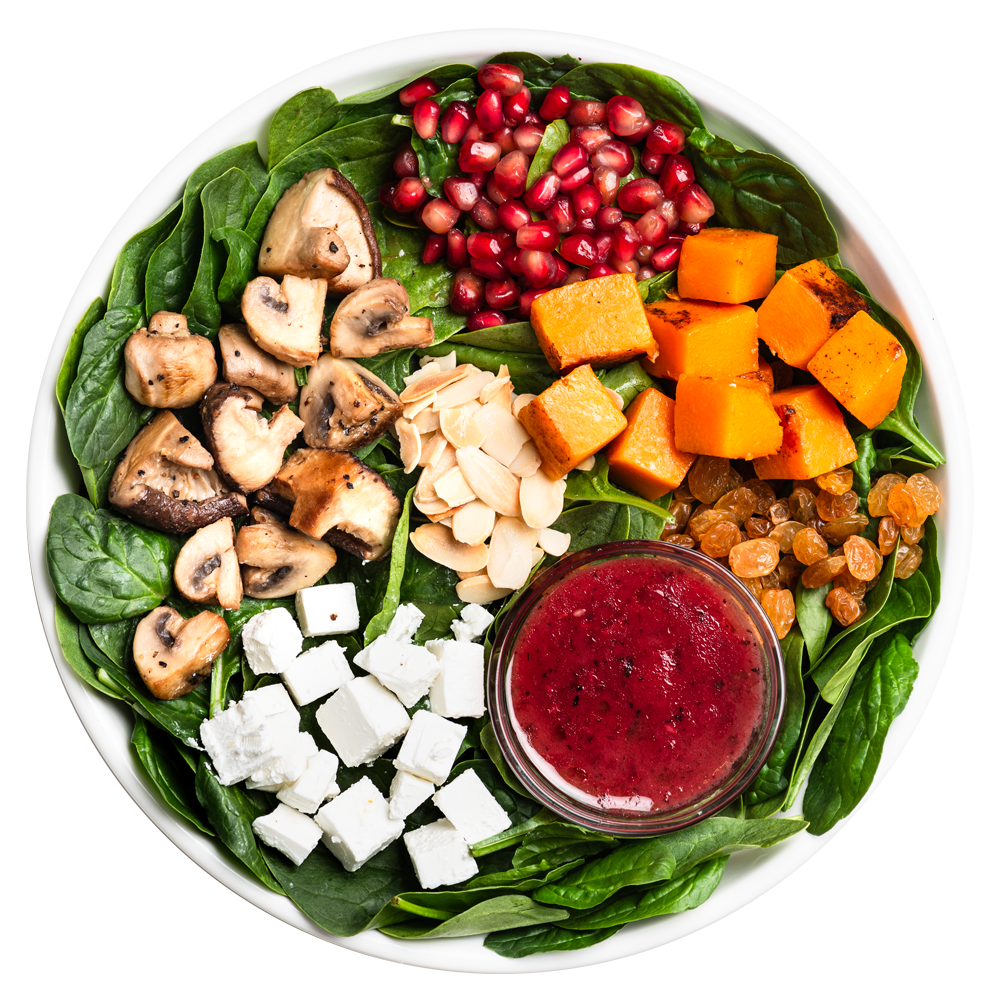
As parents and caregivers, we all want the best for our children’s health, growth, and development. Nutrition plays a pivotal role in achieving these goals, and the choice of a vegetarian diet for your child can be a meaningful one. In this exploration, we’ll explore the benefits of vegetarianism, like improved heart health, lower disease risk, and a lifelong love for diverse plant-based foods. We’ll also tackle common concerns, like ensuring your child gets all the necessary nutrients, including protein, iron, and vitamins. We’ll give you helpful tips on planning meals, where to get nutrients, and making yummy vegetarian dishes your kids will love. Whether you’re already a vegetarian family or thinking about it, our goal is to give you the know-how and confidence to make good choices for your kids’ health. As we explore the world of vegetarianism for kids together, let’s learn more about this lifestyle and support the health and happiness of our youngest family members. Protein and essential amino acids for Vegetarian Children Did you know that all the essential amino acids your body requires can be obtained from various plant foods? It’s true! Important nutrients like beans, lentils, cereals, nuts, seeds, and their spreads can provide them. Regarding children, it’s important to note that plant proteins can be harder for them to digest. Experts recommend increasing protein intake by approximately 30-35% for infants up to two years old, 20-30% for children aged two to six, and 15-20% for those over six. This means they might need a bit more protein compared to kids who eat animal products. No need to fret, as excellent plant-based protein sources are available. Legumes such as beans and lentils, as well as grains, nuts, seeds, and nut butters, can fulfill these protein requirements. Each of these foods has its unique qualities and amino acid compositions. Certain plant proteins, like soy, are excellent for meeting your protein needs, just like animal protein. However, wheat protein, when eaten alone, may not be as effective in providing usable protein as animal sources. Eating a variety of foods is important for a healthy diet. It’s a good practice to include different plant-based protein sources, especially if you don’t eat much or any animal products. If you’re a kid who eats regularly throughout the day, you don’t have to stress about combining different proteins in every meal. Iron for Vegetarian Children Many studies have looked at the diets of vegan kids, both preschoolers and school-age children, and the results are reassuring. Young vegans generally get sufficient iron, and there’s no widespread anemia evidence among them. It’s worth noting that vegans and lacto-ovo-vegetarians usually require about 1.8 times more iron than nonvegetarians because the body finds it a bit challenging to absorb iron from plant-based sources (nonheme iron). Thankfully, there are ways to boost iron absorption. Vitamin C and certain components found in vegetables can actually help the body absorb nonheme iron more efficiently. On the flip side, some substances like dietary fiber, phytates, and tannins found in plant foods can inhibit iron absorption. So, it’s all about finding the right balance. Since iron deficiency is a common issue in children, it’s important for parents and caregivers to ensure that their kids eat foods rich in iron. There are choices like iron-fortified cereals, grain products, dried beans, and peas. During periods of rapid growth, kids might need to take supplements. Zinc for Vegetarian Children In vegetarian diets, you’ll often find phytates, which can reduce the absorption of zinc in the body. About half of our typical zinc intake comes from animal-based foods. For babies up to seven months old, breast milk provides enough zinc. However, as they grow, they’ll need additional sources of this essential mineral. Now, here’s the thing: because of differences in how our bodies absorb zinc from plant-based sources, strict vegans might need to consume about 50% more zinc compared to omnivores. But don’t worry, zinc deficiency is quite rare, and most people don’t need supplements. To make sure you’re getting enough zinc in a vegetarian diet, focus on foods like legumes, nuts, yeast-leavened breads, and fermented soy products. Some food preparation techniques, like fermenting and sprouting seeds and grains, can also improve zinc absorption. Vegetarians can meet their zinc needs through smart food choices and cooking techniques, even though zinc can be a challenge. Calcium for Vegetarian Children Lacto-ovo-vegetarians easily meet calcium needs, but strict vegans should focus on this essential nutrient. Studies have shown that some strictly vegan children may not be getting as much calcium as recommended. It’s essential to understand that a vegan diet does not impact the calcium content of breast milk during breastfeeding. However, it’s crucial to make sure children get enough calcium once they are weaned. Include calcium-fortified foods in their diet, like fortified soy products, cereals, juices, and leafy vegetables. Certain low-oxalate greens like bok choy, Chinese cabbage, kale, and collards are excellent sources of highly absorbable calcium for older kids. All vegetarians must meet the recommended calcium intake levels based on their age, as specified in vegetarian food guides. Strict vegan children and adolescents may need calcium supplementation to achieve these recommended levels. Fat and Fatty Acid Vegan children usually consume less fat in their diets, about 30% to 31.5% of their total energy intake, compared to those who eat animal products. However, the good news is that this lower fat intake doesn’t appear to significantly impact their growth. Vegan diets may lack certain nutrients, specifically the long-chain omega-3 fatty acids known as docosahexaenoic acid (DHA) and eicosapentaenoic acid (EPA). Vegan diets don’t include these fatty acids, which are primarily found in fish, seafood, and eggs. To obtain DHA and EPA, vegans would need to consume significant amounts of sea vegetables or algae. Another factor to consider: vegan diets, higher in omega-6 fatty acids, can hinder the conversion of linolenic acid into DHA and EPA. Some studies have shown low levels of DHA and EPA in the blood of vegan adults. To address this, we recommend that vegan children include good sources of the precursor linolenic acid in their diets. You can find these in
Transforming On-the-Go Eating: The Innovation of SaladStop!’s Salad Kits and Collapsible Bowl
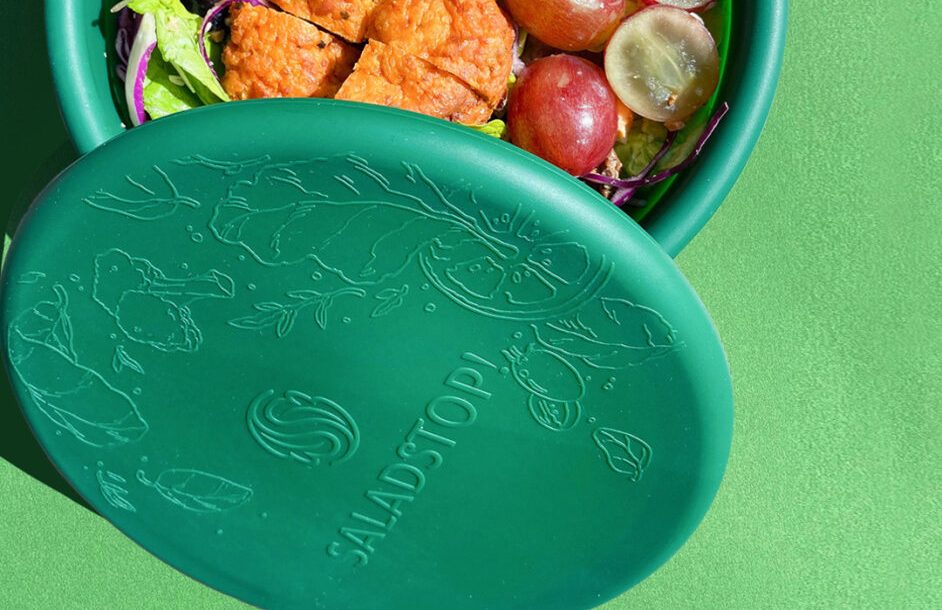
In the fast-paced rhythm of contemporary living, where convenience often trumps nutritional value, adhering to a wholesome diet can seem like an uphill battle. SaladStop!, renowned for its commitment to promoting healthier eating choices, stands at the forefront of this culinary revolution. By introducing their innovative salad kits and collapsible bowl, SaladStop! not only simplifies the process of crafting nutritious meals but also redefines the notion of on-the-go dining. Through the meticulously curated salad kits and portable collapsible bowl, SaladStop! empowers consumers to make informed dietary decisions and embrace a lifestyle centered around nourishment and well-being, regardless of the demands of modern-day living. Salad Kits: Freshness and Convenience Combined SaladStop! has long been known for its commitment to providing fresh and customizable salads. Now, they’re bringing that same commitment to the convenience of your own home or office with their salad kits. Each salad kit contains a carefully curated selection of fresh greens, vibrant vegetables, protein options, and delicious dressings – all conveniently packaged and ready to assemble. These kits not only save time but also ensure that you’re getting a nutritious meal without any of the hassle. According to the Centers for Disease Control and Prevention (CDC), adopting a diet rich in fruits and vegetables is associated with a multitude of health advantages, ranging from a decreased risk of chronic ailments like heart disease and certain cancers to improved overall well-being. By integrating SaladStop!’s salad kits into daily dietary routines, individuals are provided with an accessible avenue to enhance their nutritional intake effortlessly. With each salad kit meticulously crafted to incorporate an array of fresh produce, proteins, and wholesome grains, SaladStop! streamlines the process of consuming a balanced and nutrient-rich meal. In a society increasingly plagued by the prevalence of processed and unhealthy food options, SaladStop! emerges as a beacon of health-consciousness, offering a convenient and appetizing solution for individuals striving to prioritize their long-term health and vitality. Sustainability at its Core: SaladStop!’s Collapsible Bowl In addition to their salad kits, SaladStop! has introduced their very own collapsible bowl, designed to make eating on-the-go more convenient and sustainable than ever before. Made from durable, BPA-free silicone, this collapsible bowl is not only practical but also environmentally friendly. Its collapsible design means that it takes up minimal space in your bag or backpack, making it perfect for those busy days when you need a healthy meal on hand. Research published in the International Journal of Environmental Research and Public Health, underscores the critical role of sustainable food packaging in mitigating the environmental impact of the food industry. The study highlights the significant environmental footprint associated with traditional food packaging materials, such as plastic containers and single-use packaging, including their contribution to pollution, resource depletion, and greenhouse gas emissions. By opting for SaladStop!’s collapsible bowl, consumers can feel good about making a choice that aligns with their values. SaladStop!’s collapsible bowl transcends the boundaries of traditional salad containers, offering a versatile solution for a myriad of culinary delights. Whether you’re relishing a steaming bowl of soup on a brisk day, indulging in a hearty grain bowl packed with nutritious ingredients, or savoring a refreshing fruit salad, this innovative container ensures that your meals stay fresh and contained, regardless of your location or schedule. With its leak-proof design and ample capacity, SaladStop!’s collapsible bowl empowers individuals to embrace healthy eating habits and enjoy a diverse range of homemade dishes on the go, making every meal an opportunity for nourishment and convenience. SaladStop!’s salad kits and collapsible bowl are more than just convenient meal options – they’re symbols of a healthier, more sustainable way of living. By making it easier for consumers to incorporate fresh, nutritious foods into their diets, SaladStop! is helping to promote better health and wellness for individuals and the planet alike. So why settle for unhealthy, unsustainable meal options when you can enjoy delicious salads and meals on-the-go with SaladStop!’s innovative products? Embrace the future of healthy eating with SaladStop! and take the first step towards a brighter, healthier tomorrow. Disclaimer: At SaladStop! Group, our commitment is to empower every individual with reliable, evidence-based nutritional and wellness guidance. To earn your trust as your ultimate resource for nutritional information, our content undergoes rigorous nutritional scrutiny to ensure its accuracy, whether it’s about our offerings, culinary creations, or services. Please note that all information provided is for informational purposes only and should not be considered a substitute for professional medical or nutritional advice.
Empowering Your Health Choices: A Deep Dive into SaladStop!’s Nutritional Calculator
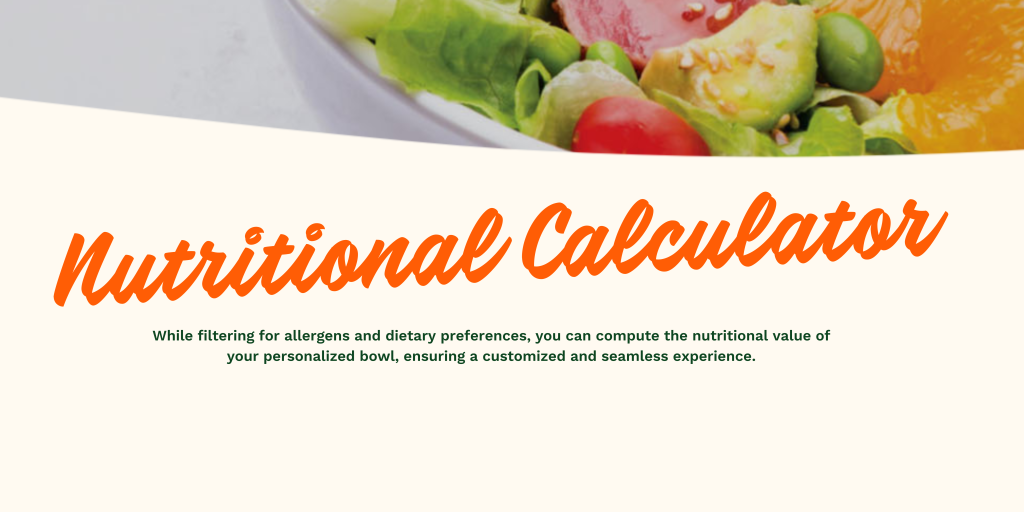
In an era where health-conscious eating is increasingly becoming the norm, SaladStop! stands out as a pioneer in providing nutritious and customizable dining options. At the heart of their commitment to promoting wellness lies the innovative Nutritional Calculator. In this blog post, we’ll explore how SaladStop!’s Nutritional Calculator works, its unparalleled personalization features, and how it seamlessly fits into various dietary preferences. Understanding SaladStop!’s Nutritional Calculator SaladStop!’s Nutritional Calculator is a user-friendly tool designed to provide customers with real-time information about the nutritional content of their customized salads. Here’s a step-by-step breakdown of how it works: 1. Select CYO (Create Your Own) Ingredients: The journey begins with you choosing from SaladStop!’s extensive range of fresh, high-quality ingredients. From crisp greens to protein-packed toppings and flavorful dressings, the possibilities are as diverse as your palate. 2. Nutrition Information Appears on Side: As you select each ingredient for your salad, the Nutritional Calculator dynamically updates to display the corresponding nutritional information. This includes details such as calorie count, macronutrient breakdown (carbohydrates, proteins, and fats), as well as essential vitamins and minerals. 3. Cumulative Nutritional Tracking: The beauty of the Nutritional Calculator lies in its ability to seamlessly integrate your selections. As you embark on your culinary journey, each ingredient you add contributes to the overall nutritional composition of your salad. Whether you’re aiming for a protein-packed powerhouse or a light and refreshing ensemble, the calculator ensures that your dietary goals are within reach. Personalization: Your Salad, Your Way One of the key features that sets SaladStop!’s Nutritional Calculator apart is its emphasis on personalization. Here’s how you can customize your salad to suit your individual needs: Calorie Control: Whether you’re aiming to maintain your current weight, lose a few pounds, or fuel an active lifestyle, the Nutritional Calculator allows you to adjust your salad’s ingredients to meet your specific calorie requirements. By monitoring the calorie content in real-time, you can create a salad that satisfies your hunger without exceeding your daily intake. Macro Balance: Are you following a particular macronutrient ratio, such as high-protein, low-carb, or balanced macros? With SaladStop!’s Nutritional Calculator, you have the flexibility to customize your salad to align with your macro goals. Whether you’re prioritizing protein for muscle growth, fats for satiety, or carbs for energy, the power is in your hands to create a meal that supports your nutritional needs. Allergen Avoidance: For individuals with food allergies or intolerances, navigating restaurant menus can be challenging. However, SaladStop!’s Nutritional Calculator makes it easy to identify and exclude allergenic ingredients from your salad. Whether you’re avoiding gluten, dairy, nuts, or other common allergens, you can confidently enjoy a safe and delicious meal tailored to your dietary restrictions. SaladStop!’s allergen filter covers a wide range of common allergens, including: Fits Your Diet of Choice No matter what dietary lifestyle you embrace, SaladStop!’s Nutritional Calculator has you covered. Here’s how it caters to various dietary preferences: In conclusion, SaladStop!’s Nutritional Calculator isn’t just a tool for counting calories – it’s a game-changer for health-conscious diners seeking personalized dining experiences. By empowering you to make informed choices about your meal, SaladStop! puts the power of nutrition in your hands, allowing you to create salads that nourish your body and delight your taste buds. So the next time you visit SaladStop!, unleash your creativity and build a salad that’s as unique as you are. Your journey towards better health starts here: Nutritional Calculator – SaladStop Singapore Disclaimer: At SaladStop! Group, our commitment is to empower every individual with reliable, evidence-based nutritional and wellness guidance. To earn your trust as your ultimate resource for nutritional information, our content undergoes rigorous nutritional scrutiny to ensure its accuracy, whether it’s about our offerings, culinary creations, or services. Please note that all information provided is for informational purposes only and should not be considered a substitute for professional medical or nutritional advice.
Revealing the Strength of Protein: Insights into its Essential Role
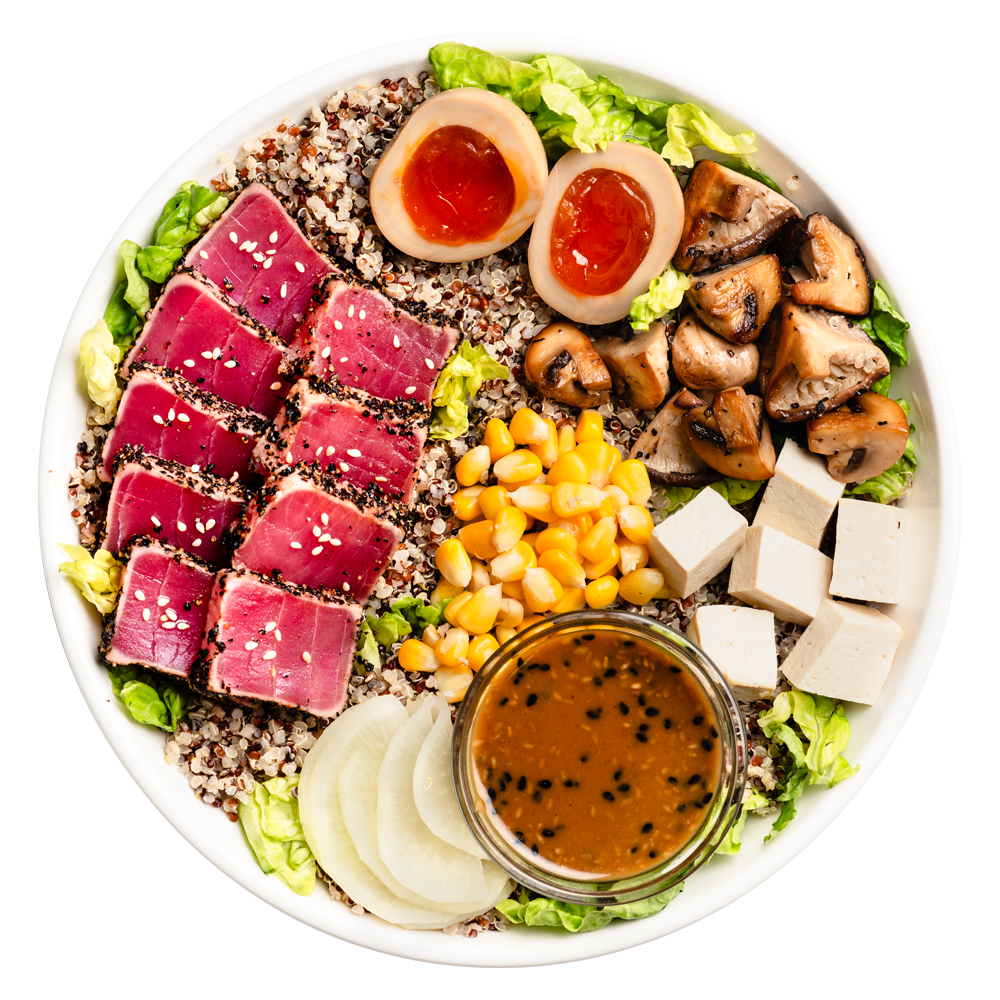
In the realm of nutrition, few macronutrients hold as much importance and intrigue as protein. From building blocks for muscles to essential components of various bodily functions, protein plays a crucial role in sustaining overall health and well-being. In this article, we delve into the daily requirements of protein intake and explore the myriad functional nutrition benefits it offers. Understanding Daily Protein Requirements Based on Different Lifestyles: Sedentary Lifestyle: For individuals leading sedentary lifestyles, characterized by minimal physical activity and exercise, the daily protein requirement remains fundamental for supporting basic bodily functions. While the recommended daily intake stands at around 0.8 grams per kilogram of body weight, sedentary individuals may opt for lean protein sources to meet their needs without excess caloric intake. Active Lifestyle: Those engaged in moderate to vigorous physical activity require higher protein intake to support muscle repair, recovery, and overall performance. Depending on the intensity and duration of their workouts, active individuals may aim for protein intake ranging from 1.2 to 2.2 grams per kilogram of body weight per day. Incorporating protein-rich foods before and after exercise sessions aids in optimizing muscle protein synthesis and promoting efficient recovery. Athletic Lifestyle: Athletes and individuals participating in intense training regimens have significantly elevated protein requirements to meet the demands of their rigorous workouts. Protein serves as a crucial component for muscle repair, growth, and strength maintenance. In such cases, protein intake may exceed 2.2 grams per kilogram of body weight, necessitating strategic meal planning and supplementation to ensure adequate protein provision. Functional Nutrition Benefits of Protein: Protein serves as the building blocks for muscles, making it essential for muscle growth and repair. After strenuous exercise or physical activity, consuming protein helps in repairing damaged muscle tissues and promoting muscle recovery. This is particularly important for athletes and individuals engaged in strength training. Including protein-rich foods in meals and snacks can help promote feelings of fullness and satiety. Compared to carbohydrates and fats, protein takes longer to digest, which can aid in appetite control and prevent overeating. As a result, incorporating protein into your diet may support weight management efforts by reducing overall calorie intake. Proteins play a vital role in metabolic processes, including the production of enzymes and hormones involved in energy metabolism. Consuming an adequate amount of protein helps support a healthy metabolism and ensures efficient energy production. Additionally, protein can be converted into glucose through gluconeogenesis, providing a source of energy when carbohydrates are limited. Many immune cells and antibodies are made up of proteins, highlighting the importance of adequate protein intake for a robust immune system. Consuming protein-rich foods can help support immune function and enhance the body’s ability to fight off infections and illnesses. Protein is not only essential for muscle health but also plays a role in maintaining bone density and strength. Collagen, a protein found in bones, provides structural support and helps prevent conditions like osteoporosis. Including sufficient protein in the diet contributes to overall bone health and reduces the risk of fractures and bone-related disorders. Protein is a key component of hair, skin, and nails, contributing to their strength, elasticity, and appearance. Adequate protein intake supports the growth and maintenance of these tissues, promoting healthy hair, glowing skin, and strong nails. To put it simply, Protein stands as a cornerstone of nutrition, offering a multitude of functional benefits beyond mere muscle building. Whether you’re an athlete striving for peak performance or an individual aiming for overall health and vitality, prioritizing adequate protein intake is essential. By understanding the daily requirements and functional nutrition benefits of protein, you can optimize your diet to support your health and well-being for years to come. Disclaimer: At SaladStop! Group, our commitment is to empower every individual with reliable, evidence-based nutritional and wellness guidance. To earn your trust as your ultimate resource for nutritional information, our content undergoes rigorous nutritional scrutiny to ensure its accuracy, whether it’s about our offerings, culinary creations, or services. Please note that all information provided is for informational purposes only and should not be considered a substitute for professional medical or nutritional advice.
10 Essential Tips for Healthy Living

In today’s modern world, achieving and maintaining a healthy lifestyle has become increasingly important. With the abundance of information available, it can sometimes be overwhelming to know where to start. To help you navigate the journey to better health, here are 10 essential tips for healthy living that incorporate specific and functional foods. 1. Diversify Your plate with colorful vegetables: Fill your plate with a variety of colorful vegetables, such as nutrient-rich kale. This leafy green, like the one found in SaladStop!’s Harvest bowl, is packed with essential vitamins and minerals. 2. Incorporate protein-rich foods: Protein is crucial for muscle repair, immune function, and satiety. Include sources of lean protein in your meals, such as grilled chicken breast, tofu, lentils, or beans. These options are not only rich in protein but also provide other important nutrients like iron and fiber. 3. Choose whole grains: Swap refined grains for whole grains to increase fiber intake and promote digestive health. Opt for whole grain options like quinoa, brown rice, oats, or barley, which provide sustained energy and help regulate blood sugar levels. 4. Embrace healthy fats: Don’t shy away from fats, but focus on incorporating healthy sources such as avocado, nuts, seeds, and olive oil. These fats are rich in omega-3 fatty acids and monounsaturated fats, which support heart health and brain function. 5. Include functional foods: Integrate functional foods into your diet, which offer specific health benefits beyond basic nutrition. For example, adding flaxseeds to your salad provides a boost of omega-3s and fiber, while also supporting heart health and digestion. 6. Prioritize leafy greens: Leafy greens like kale, spinach, and Swiss chard are nutritional powerhouses packed with vitamins, minerals, and antioxidants. Incorporate them into your salads as a base or mix them into smoothies for a nutrient boost. 7. Don’t forget about berries: Berries such as strawberries, blueberries, and raspberries are not only delicious but also incredibly nutritious. They’re rich in antioxidants, fiber, and vitamins, making them a perfect addition to salads or snacks. 8. Add crunch with nuts and seeds: Sprinkle nuts and seeds like almonds, pumpkin seeds, or sunflower seeds onto your salads for added texture and nutrition. These crunchy toppings provide healthy fats, protein, and essential minerals like magnesium and zinc. 9. Keep hydrated with herbal teas: Stay hydrated throughout the day by incorporating herbal teas into your routine. Herbal teas like chamomile, peppermint, or ginger are not only hydrating but also offer various health benefits, such as aiding digestion and reducing inflammation. 10. Practice mindful eating: Take the time to savor and enjoy your meals, paying attention to hunger and fullness cues. Eating mindfully can help prevent overeating, improve digestion, and enhance overall satisfaction with your meals. Incorporating these 10 essential tips into your daily life can help you build a foundation for optimal health and well-being. By focusing on specific, functional foods and making conscious choices to nourish your body, you can embark on a journey towards a healthier and happier you. Remember, small changes can lead to significant improvements over time, so start today and reap the benefits of a balanced and nutritious diet.

